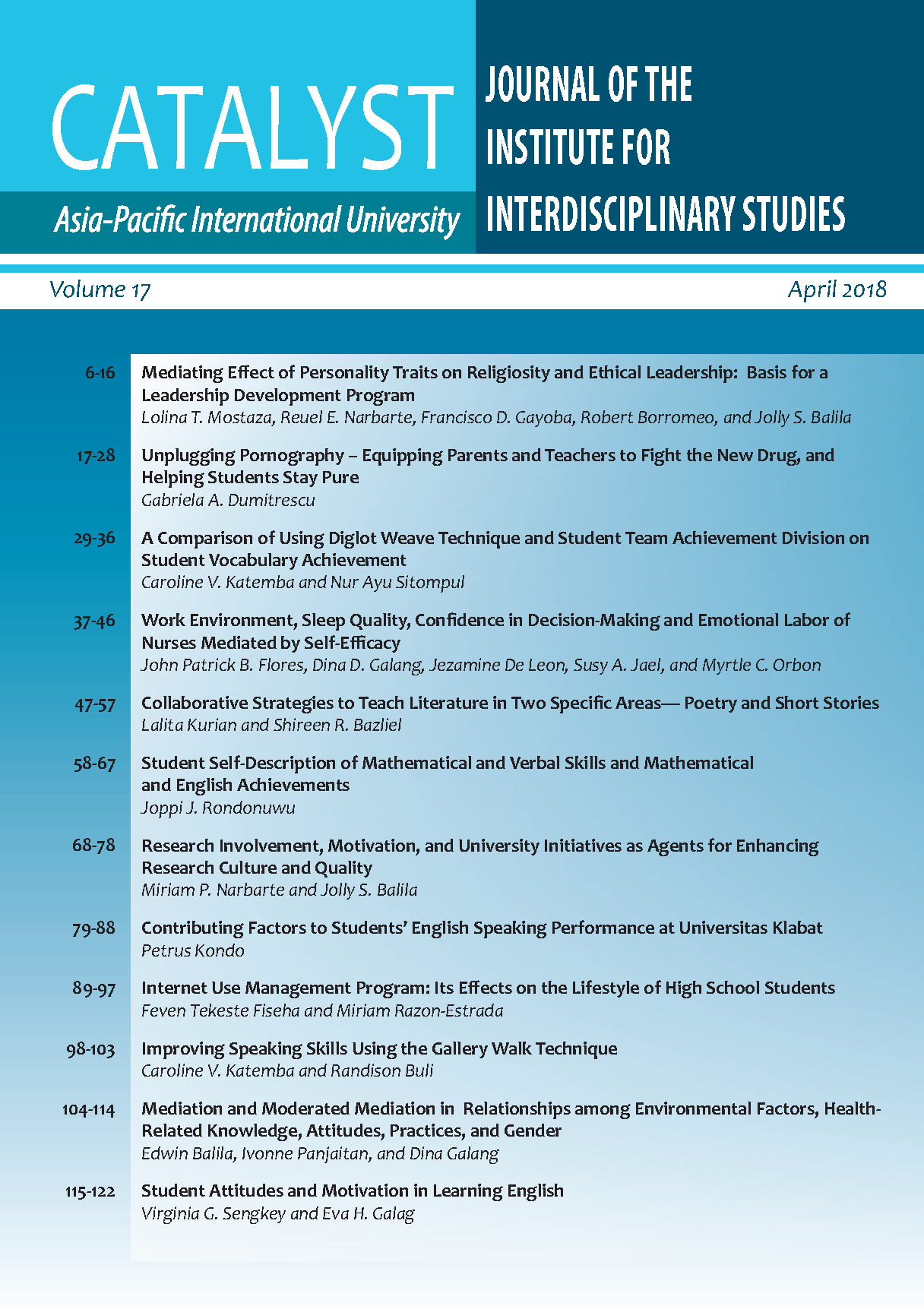Collaborative Strategies to Teach Literature in Two Specific Areas: Poetry and Short Stories
Main Article Content
Abstract
According to Barnum’s biography (2017), “Literature is one of the most interesting and significant expressions of humanity.” Literature is also the foundations of teaching literacy, as it is an “Everycentury skill” argued by Trilling and Fadel (2009). Literature is a chaotic cauldron of symbols, characters, themes, syntax, diction, tone, plots and counter plots, where each word, phrase, sentence has meanings that can be inferred. A number of systematic approaches are explored as they enable and empower students to think creatively yet systematically, making the task of teaching poetry and literature easier. The level of enjoyment and understanding by students improves exponentially, as they learn to think and connect information across the spectrum of learning. Genres are intertwined. Each is an area of specialty, each with a specific strategy, and that is what we are here to share. Some of the genres that literature covers are poetry, fiction, non-fiction, novels, fables, short stories, epics, biographies, autobiography, and legend. After systematically following researched based strategies, and genre-specific strategies, we have found that the reading level of students as well as the interest in literature has improved exponentially. The students do better in their standardized tests and develop a positive attitude towards reading.
Article Details

This work is licensed under a Creative Commons Attribution-NonCommercial-NoDerivatives 4.0 International License.
Copyright: Asia-Pacific International University reserve exclusive rights to publish, reproduce and distribute the manuscript and all contents therein.
References
Arends, R. (2007). Learning to teach (7th Edition). New York: McGraw-Hill Companies.
Barnum, P. T. Biography (2017). The Biography.com Website. Retrieved from https://www.biography.com/people/pt-barnum-9199751.
Bloom, B., Engelhart, M., Furst, E., Hill, W., and Krathwohl, D. (1956). Taxonomy of educational objectives: The classification of educational goals. Handbook 1—The cognitive domain. New York: David O. McKay.
Carter, C. (1997). Why reciprocal teaching? Educational Leadership, 54(6), 64–68. Retrieved from https://buddies.stringsnthings.org/articles/Reciprcl.pdf
Carter, R., and Mcrae, J. (1996). Language, literature and the learner: Creative classroom practice. Harlow, UK: Longman.
De Bono, E. (1985). Six thinking hats: An essential approach to business management. Little, Brown, & Company.
Farris, J., Fuhler, C., and Walther, M. (2004). Teaching reading: a balanced approach for today’s classrooms. New York: McGraw-Hill.
Halperin, R. (2005). Reading and writing poetry: BONI Tanella (Côte d’Ivoire). Retrieved from https://unesdoc. unesco.org/images/0013/001395/139551e.pdf
Hanauer, D. (2004). Poetry and the meaning of life: Reading and writing poetry in the language arts classroom. Toronto: Pippin Press.
Hanauer, D. (2001). The task of poetry reading and second language learning. Applied Linguistics, 22(3), 295–323.
Henderson, G., Day, W., and Waller, S. (1994). Literature and ourselves, New York: HarperCollins College Publishers.
Kramsch, C. (1993). Context and culture in language teaching. Oxford, UK: Oxford University Press.
Koch, K. (1996). The art of poetry. Ann Arbor: University of Michigan.
Lyman, F. (1981). The responsive classroom discussion. In Anderson, A. S. (Ed.), Mainstreaming digest (pp. 109-113). College Park, MD: University of Maryland College of Education. Retrieved from https://ia801003.us.archive. org/9/items/mdu-univarch-027524/univarch-027524.pdf.
Ogle, D. (1986). K-W-L: A teaching model that develops active reading of expository text. The Reading Teacher, 39(6), 564–570. Retrieved from https://www.jstor.org/stable/20199156.
Palincsar, A. (1984). Reciprocal teaching of comprehension fostering and comprehension monitoring activities. Cognition and Instruction, 1(2), 117–175. Retrieved from https://citeseerx.ist.psu.edu/viewdoc/download?doi= 10.1.1.648.8749&rep=rep1&type=pdf
Rasinski, T., & Padak, N. (1996). Holistic reading strategies: Teaching children who find reading difficult. Englewood Cliffs, NJ: Merrill/Prentice Hall.
Robinson, H. J. (1939). On various kinds of thinking. In Bader, A. L. & Wells, C. F. (Eds.), Essays of three Decades. Essays, UK. (November 2013). The Thinking Styles & Decision Making. Retrieved from https://www.ukessays. com/essays/management/the-thinking-styles-anddecision-making.php?cref=1 New York: Harper & Bros.[l1]
Robinson, F. (1970). Effective Study. New York: Harper & Row.
Snowman, J., and McCown, R. (2012). Psychology applied to teaching, (13th Ed). Wadsworth, Cengage Learning.
Trilling, B. and Fadel, C. (2009). 21st century learning skills. San Francisco, CA: John Wiley & Sons.
SQ3R Reading Method. (nd). Study Guides and Strategies. In Robinson, Francis Pleasant. (1970) Effective study. New York: Harper & Row. Retrieved from https://www.studygs.net/texred2.htm
Weinstein, G. (1999). Learners’ lives as curriculum: Six journeys to immigrant literacy. Washington, DC and McHenry, IL: Center for Applied Linguistics and Delta Systems.
Wood, K., Lapp, D., & Flood, J. (1992). Guiding readers through texts: A review of study guides. Newark, DE: International Reading Association.
West, J. (1985). Conversations with William Styron. Jackson: University Press of Mississippi.


